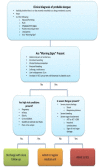Dengue, Zika and Chikungunya: Emerging Arboviruses in the New World
- PMID: 27833670
- PMCID: PMC5102589
- DOI: 10.5811/westjem.2016.9.30904
Dengue, Zika and Chikungunya: Emerging Arboviruses in the New World
Abstract
The arboviruses that cause dengue, chikungunya, and Zika illnesses have rapidly expanded across the globe in recent years, with large-scale outbreaks occurring in Western Hemisphere territories in close proximity to the United States (U.S.). In March 2016, the Centers for Disease Control and Protection (CDC) expanded its vector surveillance maps for A. aegypti and A. albopictus, the mosquito vectors for these arboviruses. They have now been shown to inhabit a larger portion of the U.S., including the heavily populated northeast corridor. Emergency physicians need to further familiarize themselves with these diseases, which have classically been considered only in returning travelers but may soon be encountered in the U.S. even in the absence of travel. In this paper, we discuss the presentation and treatment of dengue, Zika, and chikungunya, as well as special challenges presented to the emergency physician in evaluating a patient with a suspected arbovirus infection.
Conflict of interest statement
By the WestJEM article submission agreement, all authors are required to disclose all affiliations, funding sources and financial or management relationships that could be perceived as potential sources of bias. The authors disclosed none.
Figures







References
-
- Nash D, Mostashari F, Fine A, et al. The Outbreak of West Nile Virus Infection in the New York City Area in 1999. N Engl J Med. 2001;344:1807–14. - PubMed
-
- Barnett E. Yellow Fever: Epidemiology and Prevention. Clin Infect Dis. 2007;44(6):850–6. - PubMed
-
- Centers for Disease Control and Protection. Dengue Epidemiology. [Accessed April 1, 2016]. Available at: http://www.cdc.gov/dengue/epidemiology/index.html#transmission.
Publication types
MeSH terms
Substances
LinkOut - more resources
Full Text Sources
Other Literature Sources
Medical
